Updated on August 20, 2205
Thai food is much more than sustenance; it reflects centuries of culture, tradition, and community spirit. The balance of flavors—sweet, sour, salty, bitter, and spicy—mirrors the Thai way of life: harmonious, vibrant, and deeply rooted in sharing. Meals are often communal, bringing families, friends, and even strangers together around a table laden with dishes that tell stories of history, geography, and belief. For travelers, experiencing Thai cuisine is not just about tasting—it’s about immersing in the rhythm of Thai daily life.
When visiting Thailand your taste buds will be thrilled and so will your nostrils with its cuisines’ taste and smell that have various flavors and fragrances which are hard to exhaust. We have therefore come up with a list of the best Thai food that you must try when in Thailand.
A Culinary Journey into Thailand’s Rich Heritage
Traveling through Thailand introduces you to a captivating world where culture, tradition, and cuisine merge seamlessly. Aside from learning the essential phrases when visiting Thailand, it’s also just as important to learn through their cuisine. From Bangkok’s bustling fine-dining scene to the hidden culinary gems of Chiang Mai and the fresh seafood spreads along Phuket’s coast, the country offers flavors that are as diverse as its landscapes.
Thai cuisine is a tapestry of influences—royal recipes, regional specialties, and modern interpretations—that continue to enchant even the most seasoned gourmands. Upscale restaurants and opulent resorts elevate these dishes into refined dining experiences, while still keeping their essence intact. With this in mind, here are ten must-try Thai dishes that you should not miss when exploring this culinary paradise.
1. Tom Yum Goong
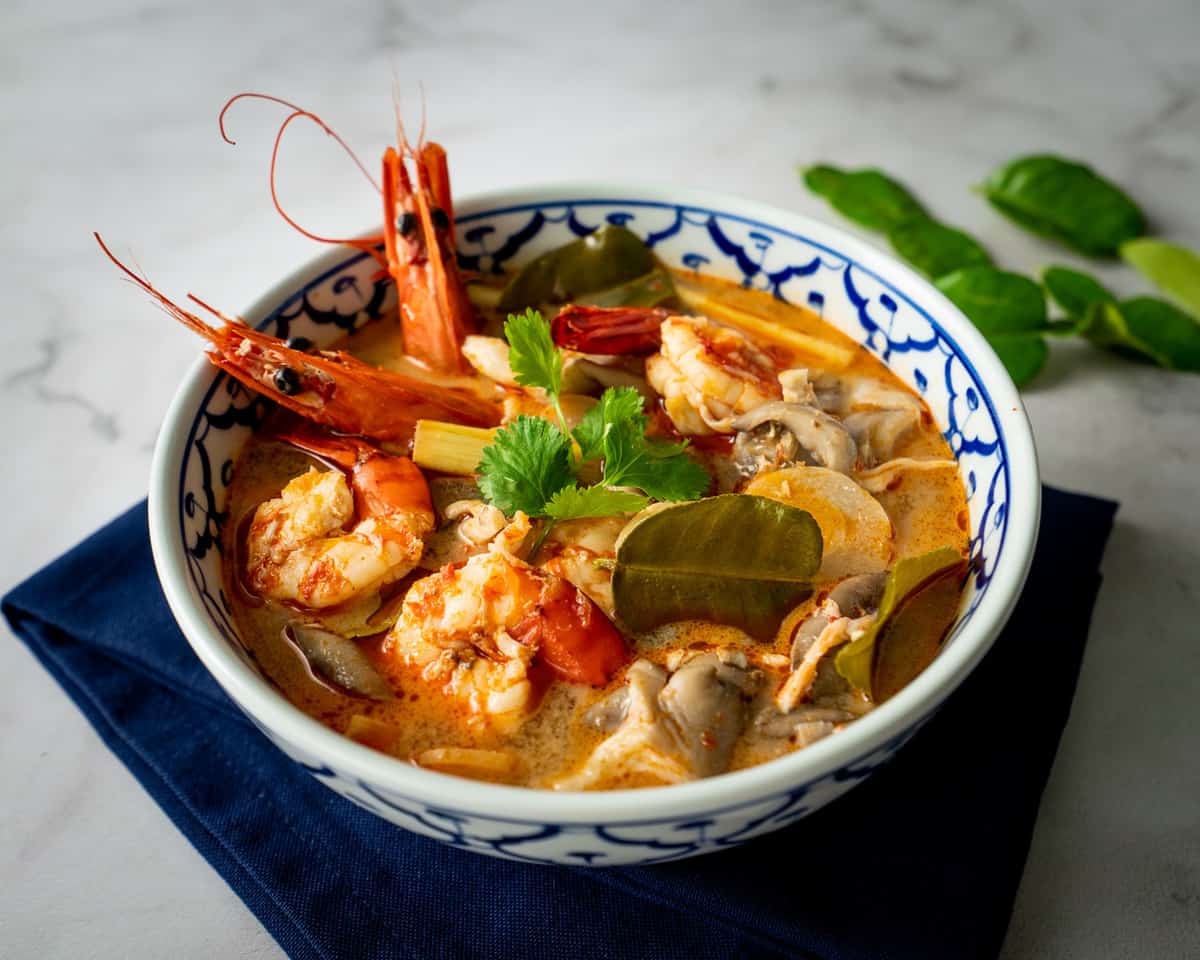
- Description: Fragrant hot-and-sour shrimp soup known for its bold and refreshing flavors.
- Ingredients: Lemongrass, kaffir lime leaves, galangal, chilies, lime juice, mushrooms, river prawns.
- Significance: A global icon of Thai cuisine and believed to support immunity.
A dish synonymous with Thailand, Tom Yum Goong is a fragrant hot-and-sour shrimp soup that awakens the palate. Beyond its global fame, Tom Yum is believed to boost the immune system, thanks to its blend of herbs long used in traditional Thai medicine.
2. Som Tum
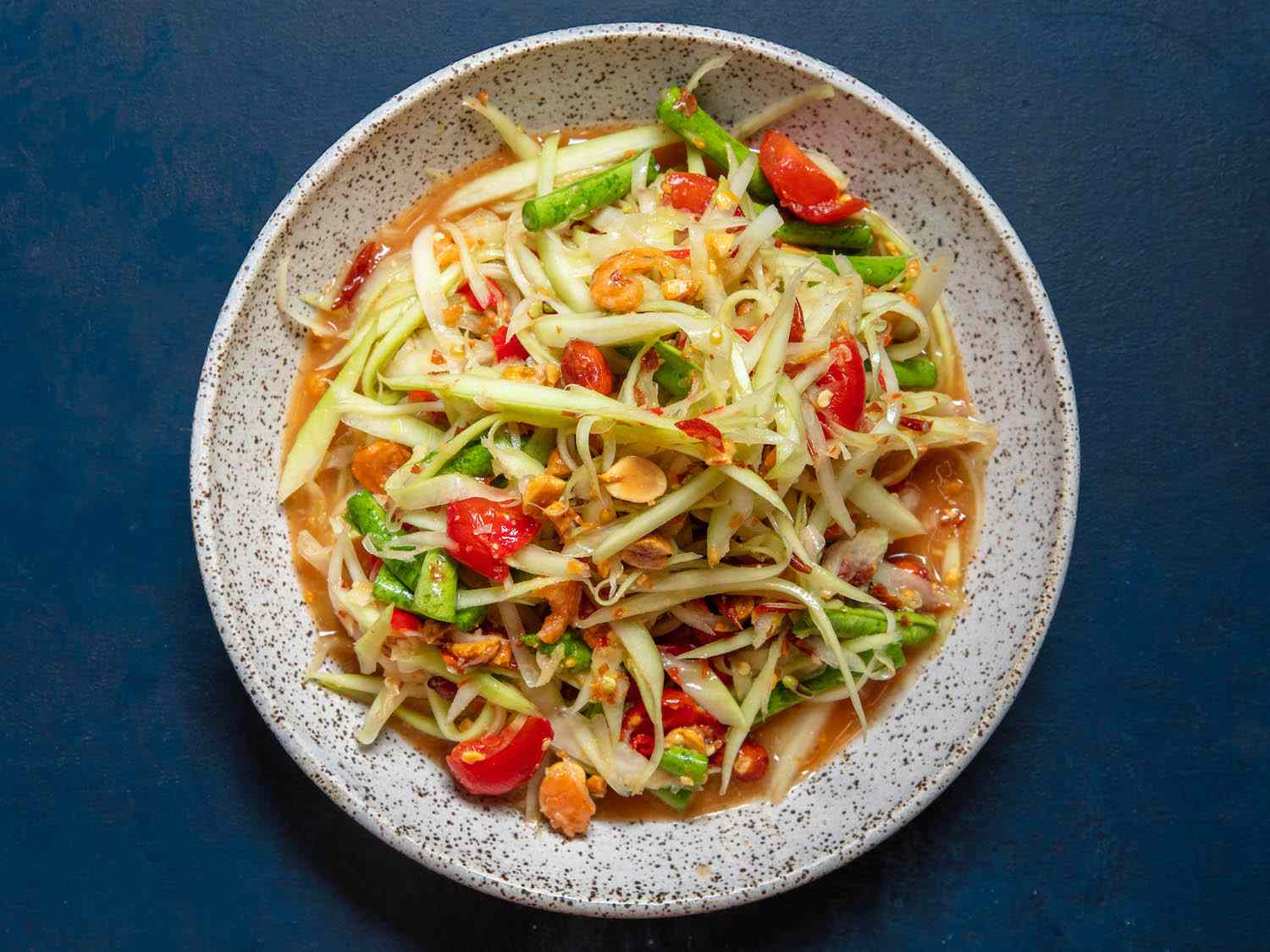
- Description: Green papaya salad that perfectly balances tangy, spicy, and sweet notes.
- Ingredients: Shredded papaya, tomatoes, long beans, garlic, chilies, peanuts, fish sauce, lime, palm sugar.
- Significance: A classic dish from Isaan (northeast Thailand), loved for its zesty, appetite-awakening flavor.
Som Tum or green papaya salad, is a vibrant dish that balances tangy, spicy, and sweet notes. Originating from the northeast (Isaan) region, Som Tum reflects the Thai preference for fresh, zesty flavors that stimulate the appetite, especially in warmer climates.
3. Tom Kha Gai
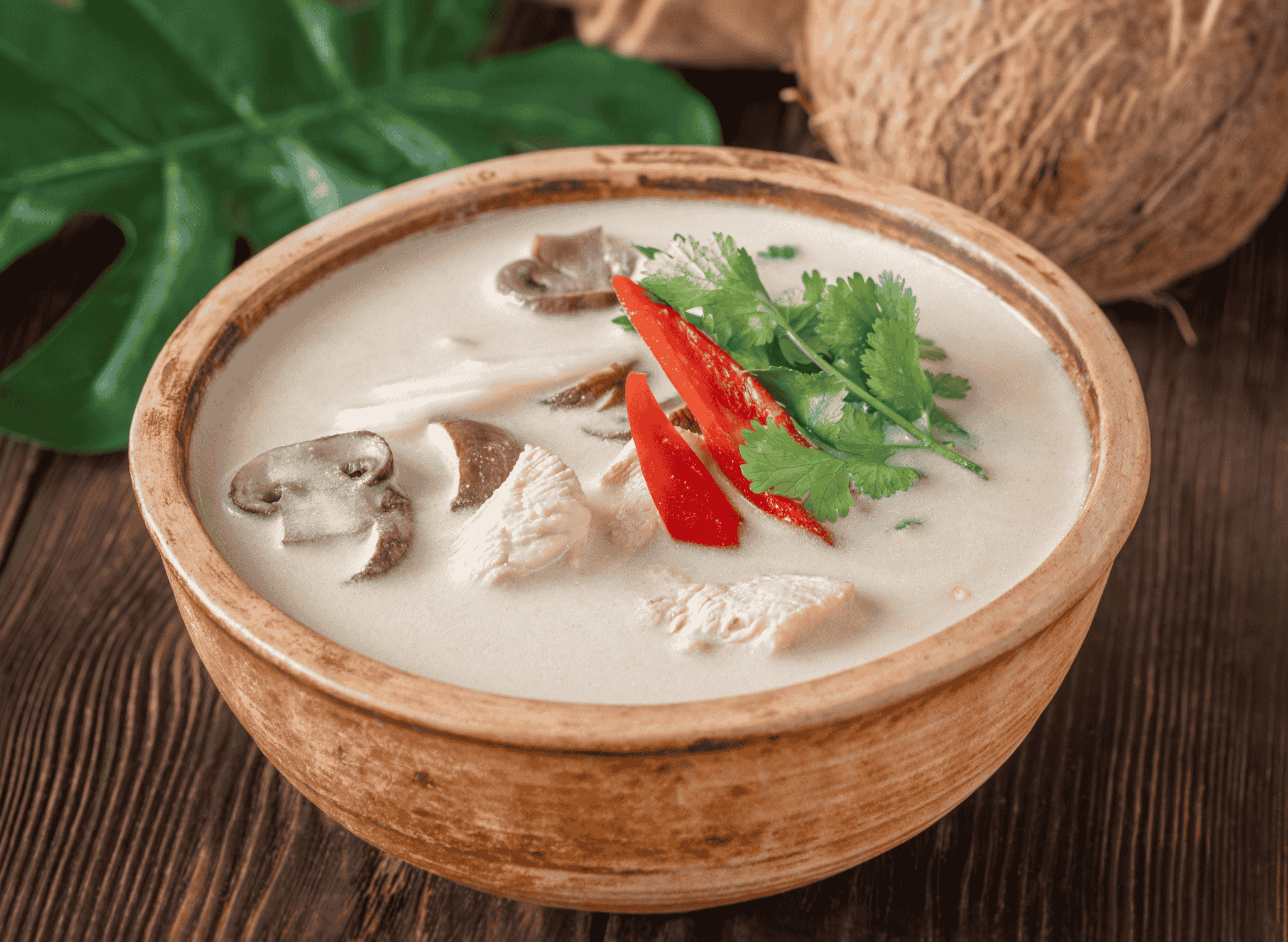
- Description: A delicate coconut chicken soup that’s lighter and creamier than Tom Yum.
- Ingredients: Galangal, lemongrass, kaffir lime leaves, coconut milk, chicken, mushrooms, lime juice.
- Significance: Considered a comfort dish, offering warmth and nourishment in Thai households.
For those who prefer a gentler flavor, Tom Kha Gai—coconut chicken soup—is the perfect choice. Tom Kha Gai is often served as a comfort dish, symbolizing warmth and nourishment, making it a staple in Thai households.
4. Gaeng Daeng

- Description: Rich, aromatic red curry served with tender cuts of meat.
- Ingredients: Red curry paste, coconut milk, kaffir lime leaves, basil, duck or beef.
- Significance: Embodies the Thai love for balance—spice, creaminess, and fragrant herbs.
Gaeng Daeng or red curry, is a luxurious dish with a rich and aromatic sauce made from red curry paste, coconut milk, and fragrant herbs. Its vibrant red hue is as inviting as its flavor, representing the balance between intensity and refinement in Thai cuisine.
5. Pad Thai
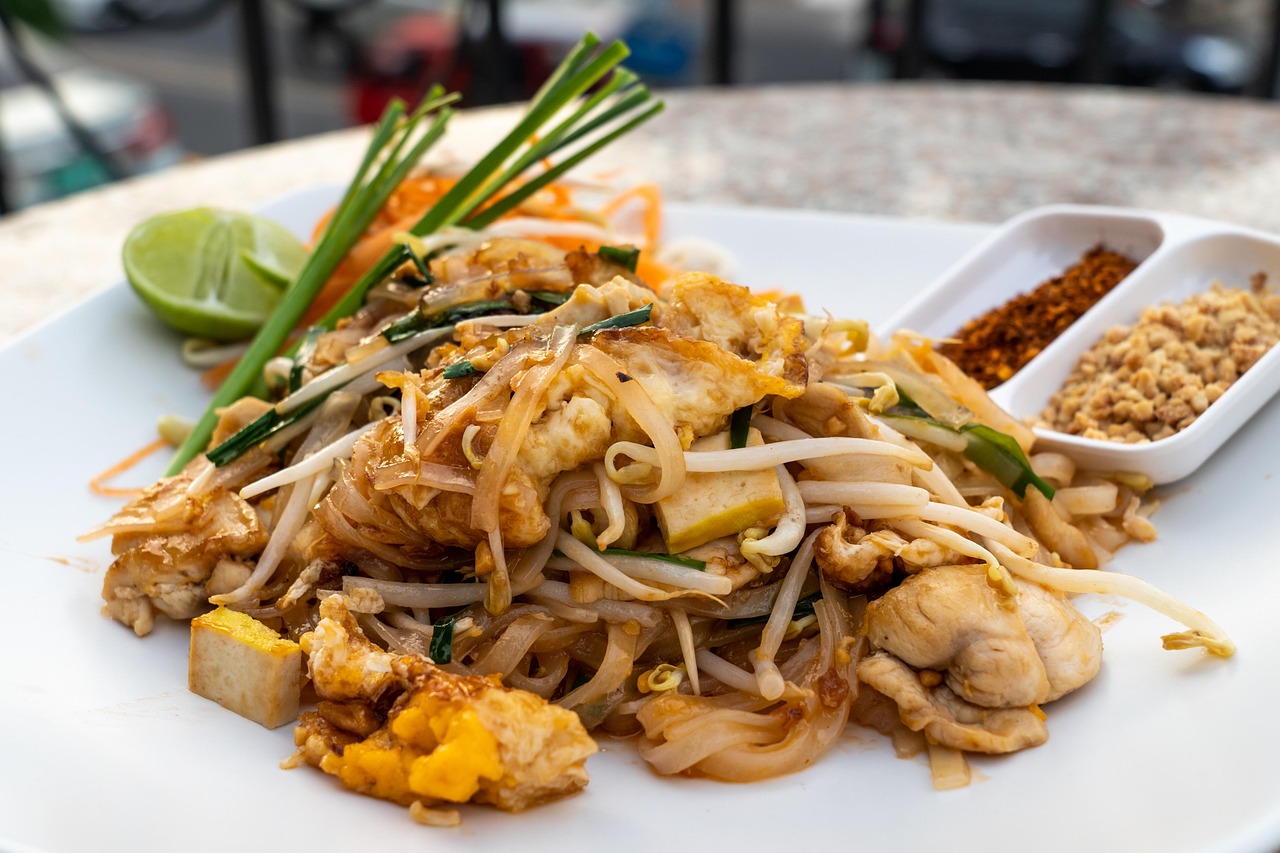
- Description: Stir-fried noodle dish that has become Thailand’s most famous export.
- Ingredients: Rice noodles, eggs, bean sprouts, tofu or shrimp, tamarind paste, fish sauce, peanuts, lime.
- Significance: A national staple created in the 20th century, now an international favorite.
Perhaps the most internationally recognized Thai dish, Pad Thai is a stir-fried noodle masterpiece. Originally introduced during the mid-20th century to promote nationalism and rice noodle consumption, Pad Thai has since become a global icon. Despite its simple ingredients, its sweet-savory-tangy flavor profile is deeply satisfying, making it a must for any traveler.
6. Khao Pad

- Description: Thai fried rice, simple yet elevated with aromatic flavors.
- Ingredients: Jasmine rice, garlic, eggs, vegetables, meat or seafood, fish sauce, soy sauce.
- Significance: A versatile comfort food that showcases Thailand’s reliance on fresh and local produce.
Khao Pad or Thai fried rice may appear simple, but it’s elevated by the use of fragrant jasmine rice, fresh vegetables, eggs, and a choice of meat or seafood. Popular across all regions, Khao Pad is a lunchtime favorite and a reminder of the Thai emphasis on fresh, locally sourced ingredients.
7. Gaeng Keow Wan Kai
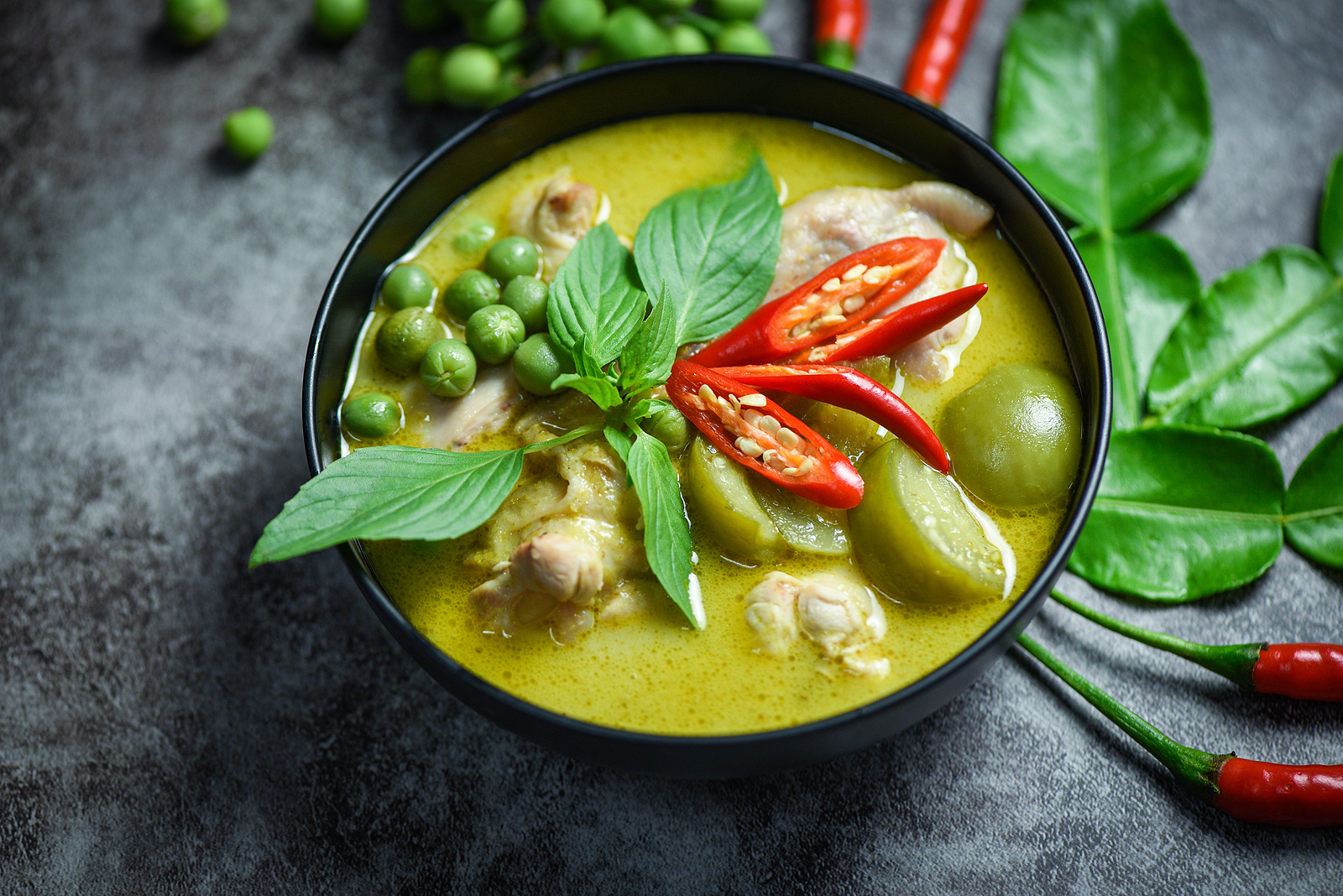
- Description: Green curry chicken with a slightly sweeter, more refreshing profile than red curry.
- Ingredients: Green curry paste, coconut milk, chicken, eggplants, Thai basil, kaffir lime leaves.
- Significance: A favorite among locals and visitors alike, known for its vibrant color and balanced taste.
Gaeng Keow Wan Kai is known as green curry chicken. It is a vibrant dish made with green curry paste, coconut milk, Thai basil, and tender chicken. This dish exemplifies the Thai love for balancing spice with freshness, and it’s often enjoyed with fragrant steamed rice.
8. Yam Nua
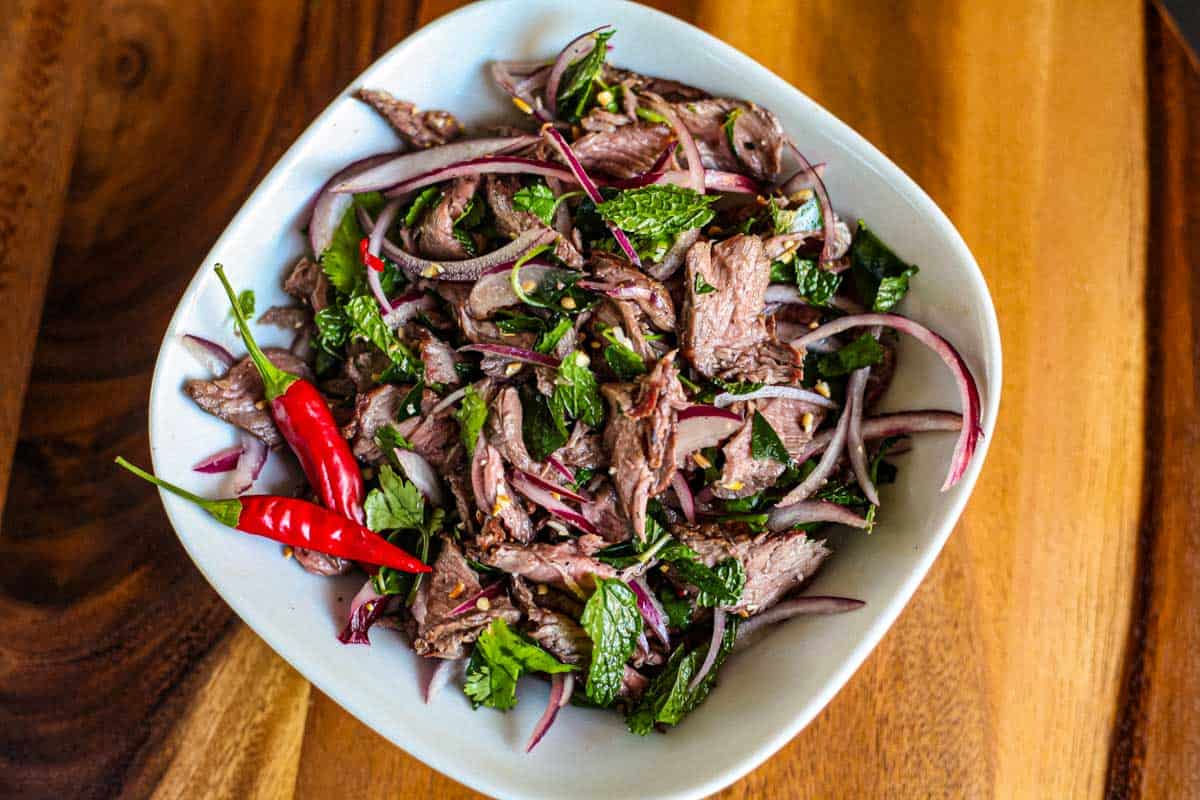
- Description: A refreshing Thai beef salad packed with spice and zest.
- Ingredients: Grilled beef, lime juice, fish sauce, chilies, onions, mint, cilantro.
- Significance: Often enjoyed as part of a shared meal, emphasizing Thai dining’s communal nature.
For those craving something refreshing yet bold, Yam Nua is a Thai beef salad, offering a perfect blend of spice and zest. Light yet full of character, Yam Nua is often enjoyed as part of a shared meal, reflecting the Thai value of togetherness.
9. Pak Boong
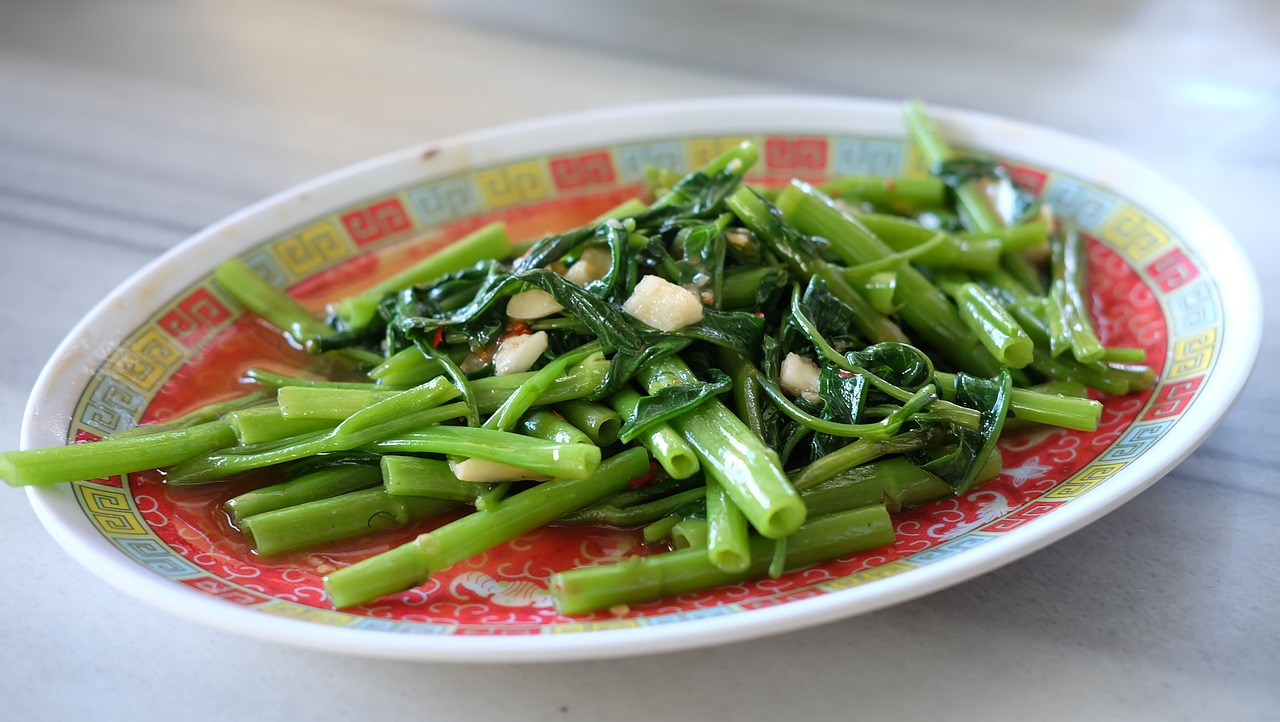
- Description: Stir-fried morning glory, a humble dish with bold, savory flavors.
- Ingredients: Water spinach, garlic, chilies, fermented soybean paste, oyster sauce.
- Significance: Popular in both street stalls and fine dining, showing Thailand’s ability to elevate vegetables.
Pak Boong, also called “morning glory,” is a stir-fried vegetable dish that highlights the Thai ability to transform simple ingredients into something extraordinary. Popular as both street food and in upscale dining, Pak Boong demonstrates the importance of vegetables in Thai cuisine and the cultural emphasis on balance in meals.
10. Kai Med Ma Muang

- Description: Stir-fried chicken with cashew nuts, a crunchy and satisfying dish.
- Ingredients: Chicken, roasted cashews, onions, bell peppers, dried chilies, sweet-savory sauce.
- Significance: A comforting yet elegant favorite found in eateries across Thailand.
A delightful stir-fry, Kai Med Ma Muang—chicken with cashew nuts—combines tender chicken pieces, roasted cashews, onions, bell peppers, and dried chilies in a savory-sweet sauce. It’s widely enjoyed across Thailand and often found in both casual eateries and fine dining establishments.
Savoring Thai Food Like a Local
Finding the best Thai food in Thailand often means looking beyond the fancy advertisements and promotions. While street food markets offer authenticity and charm, upscale restaurants, boutique hotels, and luxury villas in Phuket or even Koh Samui, refine these dishes into unforgettable culinary experiences. It’s important to highlight that dining at luxury villas are more flexible compared to 5-star hotels with a fixed menu. Unlike the latter, guests may ask their dedicated concierge or villa specialist for a private chef and menu tailored to their preferences.
For those staying in exclusive accommodations, exploring how meals & food are served at a luxury villa provides a unique perspective on Thailand’s gastronomic culture, with curated menus designed around fresh local produce and personalized dining.






